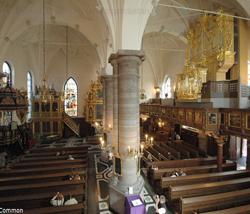
The Ugrino-Festival Orgelbewegung will take place at German St. Gertrud’s Church in Stockholm, Sweden, May 13–15.
It will feature lectures (5:30 p.m.) and recitals (6 p.m.) on the German church’s neoclassical organ by Willi-Peter (1972, Cologne), which will be sold to St. Petersburg and replaced by an Åkerman-organ (1884) in September 2016.
The schedule: May 13, Christof Pülsch (Bielefeld, Germany); 5/14, Martin Riessen (Vikbolande, Sweden), 5/15: Michael Dierks (Stockholm).



